
IN THE LATE 1980s or early 1990s, Canadian politician Robert Kaplan was driving through upstate New York on his way from Toronto to his apartment in New York City. As he often did, he stopped to browse through the antiques at a flea market off the New York State Thruway. There, a Quebecois vendor showed his fellow Canadian a special item. It was a badly damaged three-foot-tall wooden carving depicting a lion and a unicorn as well as emblems representing England, Scotland, and Ireland. The antiques dealer shared a secret about its history that had been passed down in his family for generations. He told Kaplan that the object was the official royal coat of arms that had once hung in the old Province of Canada’s Parliament building in Montreal and that it had been pillaged when a violent politicized mob burned the building to the ground in 1849. Kaplan, like most modern-day Canadians, was largely unfamiliar with that incident.
Although he was skeptical about its origins, Kaplan nonetheless purchased the piece. He hung it on his wall and didn’t give it much thought for almost two decades—that is, until 2011, when he read an article in a Canadian newspaper announcing the excavation of a long-forgotten former Parliament building in Montreal that had supposedly been destroyed in the nineteenth century. At that moment he began to wonder whether the antiques seller had been telling the truth those many years ago, and whether he had in his possession an arcane piece of Canadian history.
This story is from the November/December 2020 edition of Archaeology.
Start your 7-day Magzter GOLD free trial to access thousands of curated premium stories, and 8,500+ magazines and newspapers.
Already a subscriber ? Sign In
This story is from the November/December 2020 edition of Archaeology.
Start your 7-day Magzter GOLD free trial to access thousands of curated premium stories, and 8,500+ magazines and newspapers.
Already a subscriber? Sign In
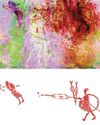
A Very Close Encounter
New research has shown that human figures painted in red on a rock art panel in central Montana depict individuals engaged in a life-or-death encounter during an especially fraught historical moment.
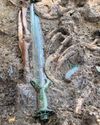
A Sword for the Ages
A zigzag pattern, now tinged with the green-blue patina of oxidized metal, adorns the octagonal hilt of a rare sword dating to the Middle Bronze Age in Germany (1600-1200 B.C.) that was recently excavated in the Bavarian town of Nördlingen.
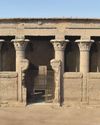
Ancient Egyptian Astrology
For centuries, layers of soot have coated the ceilings and columns in the entrance hall of Egypt's Temple of Esna. Now, an Egyptian-German team of researchers, led by Hisham El-Leithy of the Egyptian Ministry of Tourism and Antiquities and Christian Leitz of the University of Tübingen, is restoring the temple's vibrant painted reliefs to their original brilliance.
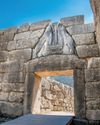
BRONZE AGE POWER PLAYERS
How Hittite kings forged diplomatic ties with a shadowy Greek city-state
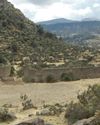
RITES OF REBELLION
Archaeologists unearth evidence of a 500-year-old resistance movement high in the Andes

Secrets of Egypt's Golden Boy
CT scans offer researchers a virtual look deep inside a mummy's coffin

When Lions Were King
Across the ancient world, people adopted the big cats as sacred symbols of power and protection

UKRAINE'S LOST CAPITAL
In 1708, Peter the Great destroyed Baturyn, a bastion of Cossack independence and culture

LAPAKAHI VILLAGE, HAWAII
Standing beside a cove on the northwest coast of the island of Hawaii, the fishing village of Lapakahi, which is surrounded by black lava stone walls, was once home to generations of fishers and farmers known throughout the archipelago for their mastery of la'au lapa'au, or the practice of traditional Hawaiian medicine. \"

A MORE COMFORTABLE RIDE
Although the date is much debated, most scholars believe people 5,000 years ago. For thousands of years after that, they did so without saddles. \"In comparison with horse riding, the development of saddles began relatively late, when riders began to care more about comfort and safety in addition to the horse's health,\" says University of Zurich archaeologist Patrick Wertmann.